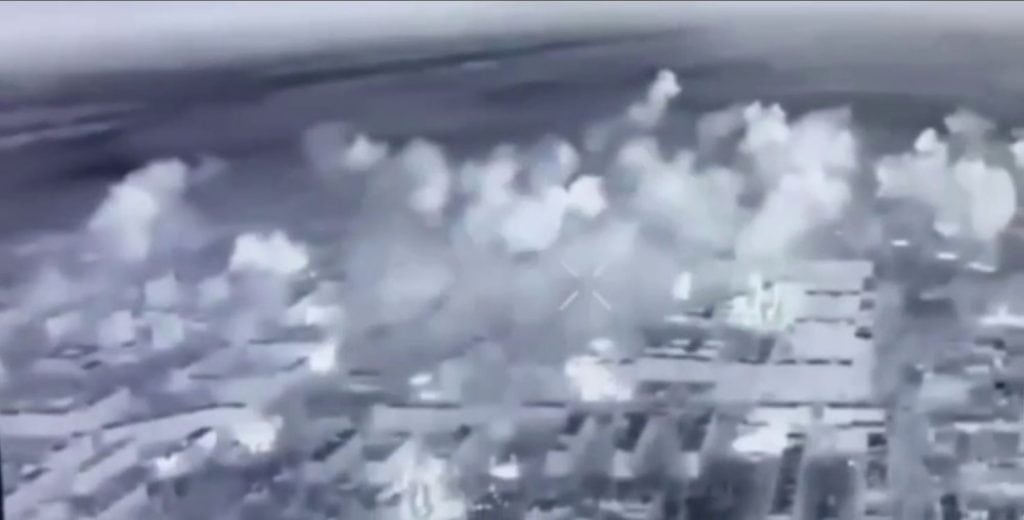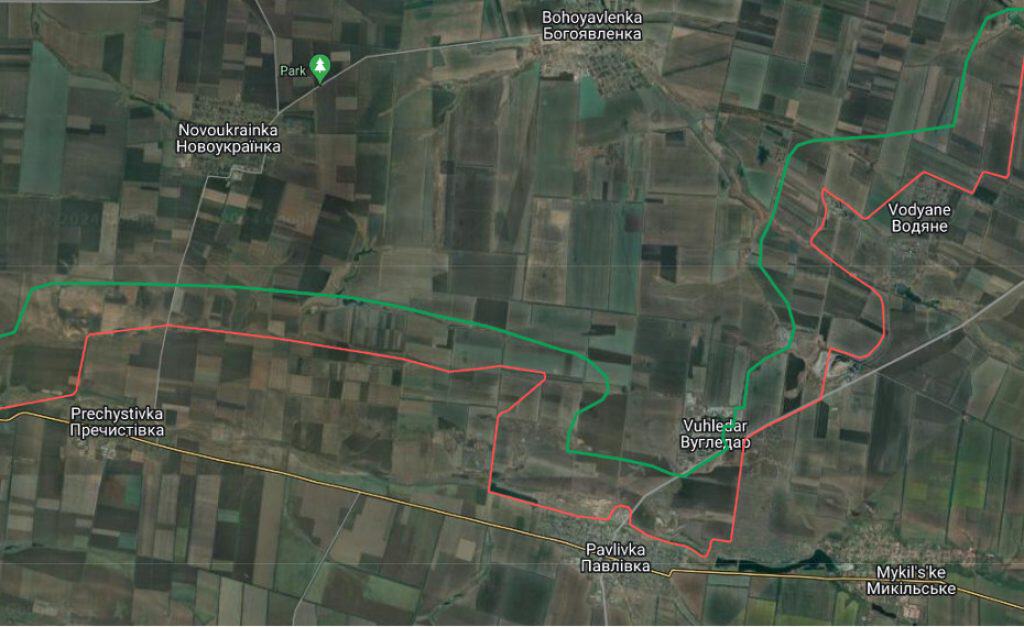
This article was originally published on Long War Journal. You can read the original article HERE

Ukraine’s yearslong defense of Vuhledar, a small city serving as a defensive stronghold in the Donetsk region, appears to be nearing its denouement. Russian advances on Vuhledar’s flanks have put it at risk of encirclement, and Russian troops have now begun attempting to enter the city itself.
Located in the southern part of Donetsk Oblast, Vuhledar had a prewar population of around 14,000. Ukrainian troops often refer to it as a “fortress.” The city sits on high ground, and its high-rise buildings provide advantageous positions for first-person view (FPV) strike drone and anti-tank guided missile (ATGM) operators.
The current battle for Vuhledar is not the first. Russia attempted to take the city in the fall and winter of 2022–2023, likely seeking to gain breathing room for a nearby rail line running from Donetsk to Volnovakha. Moscow’s forces managed—at a high cost—to push Ukrainian troops out of the nearby village of Pavlivka but were stymied at Vuhledar.
Russian commanders stubbornly threw troops into fruitless attacks, destroying the better part of two naval infantry brigades (the 40th and 155th). Anti-tank mines, ATGMs, and artillery destroyed many Russian armored fighting vehicles as they drove down routinized avenues of advance under constant Ukrainian surveillance. Due to insufficient mine clearing, attack after attack foundered in the same fields after Ukrainian troops re-mined them.
The commander of Russia’s “Vostok” grouping of forces, responsible for southern Donetsk Oblast, was fired the following March.

However, this time around, the Russians have benefited from a weary Ukrainian defense. The 72nd Mechanized Brigade, which has anchored Ukraine’s defense in the Vuhledar area for the last two years, is “exhausted,” one of its deputy commanders recently acknowledged. With Ukraine short on combat-ready forces, the brigade has “had zero rotations since the full-scale invasion” began in 2022, he said.
Ukraine reportedly rushed some territorial defense troops to the Vuhledar area earlier this month to try to stem the bleeding but to no avail. On September 21, the Ukrainian military announced that the 72nd Brigade’s commander had been reassigned, though the reason remains unclear.
The Russians have also been smarter than in past operations. Rather than immediately attempting to assault Vuhledar, Russia first captured villages on its flanks.
Over the last few weeks, Russia has taken the village of Vodiane, northeast of Vuhledar, as well as the nearby Pivdennodonbaska-1 and Pivdennodonbaska-3 coal mines, whose large concrete structures offered advantageous defensive positions. In early September, Russian forces captured Prechystivka, which was defended by Ukraine’s 58th Motorized Infantry Brigade. The Russians have advanced several kilometers northeast of Prechystivka in recent days, threatening Vuhledar’s western flank.
Russia is thus dangerously closing to cutting the corridor from Vuhledar to the village of Bohoyavlenka, north of the city. This route is already well within range of Russian artillery and FPV drones. On Tuesday, a soldier from the 72nd Brigade said the Russians were pushing toward the Vuhledar-Bohoyavlenka road and using drones to mine it.
Meanwhile, Russia has closed in on Vuhledar itself while pounding the city with glide bombs—something Moscow largely lacked during the last battle for Vuhledar—and artillery. In recent days, Russia captured the cottages on the city’s eastern outskirts. And as of Tuesday, small groups of Russian assault infantry began penetrating Vuhledar’s eastern edge. Whether the Russians have managed to secure a foothold there remains unclear.
Given the risk of encirclement, Ukraine may soon decide to withdraw from Vuhledar. In prior situations like this, however, Ukrainian commanders have often clung to positions for longer than is advisable. This tactic tends to result in higher casualties for troops defending the pocket—something Ukraine can ill-afford, given its current manpower shortage.
Vuhledar’s fall will aid Russia’s efforts to push Ukrainian forces out of southern Donetsk Oblast. A northward push from Vuhledar would complement Russia’s ongoing efforts to reach the city of Kurakhove from the north, east, and southeast. Without the Vuhledar fortress to lean on, maintaining a defense in that area may require additional forces, even as the 72nd Brigade is in dire need of rotation. With few units available to plug the gap, Ukraine’s lines may soon be stretched even thinner.
This article was originally published by Long War Journal. We only curate news from sources that align with the core values of our intended conservative audience. If you like the news you read here we encourage you to utilize the original sources for even more great news and opinions you can trust!









Comments